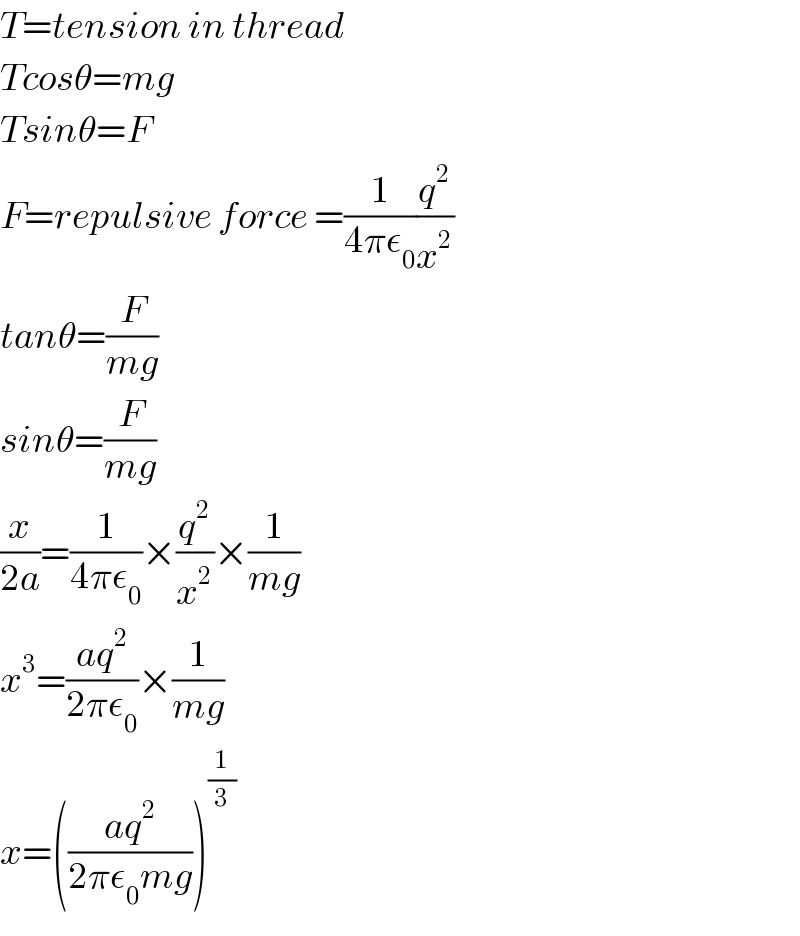
Question and Answers Forum
Question Number 50994 by peter frank last updated on 23/Dec/18

Answered by tanmay.chaudhury50@gmail.com last updated on 23/Dec/18

Answered by peter frank last updated on 23/Dec/18
![F=(q^2 /(4πε_0 r^2 )) [q_1 =q_(2 ) ] sin θ=(x/(2a)) tan θ=(F/(mg)) F=mgtan θ tan θ≈sin θ=θ F=mg(x/(2a))......(i) F=(q^2 /(4πε_0 r^2 )) [ r=x].....(ii) mg(x/(2a))=(q^2 /(4πε_0 x^2 )) x=[((q^2 a)/(4πε_0 mg))]^(1/3)](Q51101.png)
| ||
Question and Answers Forum | ||
Question Number 50994 by peter frank last updated on 23/Dec/18 | ||
 | ||
Answered by tanmay.chaudhury50@gmail.com last updated on 23/Dec/18 | ||
 | ||
| ||
Answered by peter frank last updated on 23/Dec/18 | ||
![F=(q^2 /(4πε_0 r^2 )) [q_1 =q_(2 ) ] sin θ=(x/(2a)) tan θ=(F/(mg)) F=mgtan θ tan θ≈sin θ=θ F=mg(x/(2a))......(i) F=(q^2 /(4πε_0 r^2 )) [ r=x].....(ii) mg(x/(2a))=(q^2 /(4πε_0 x^2 )) x=[((q^2 a)/(4πε_0 mg))]^(1/3)](Q51101.png) | ||
| ||